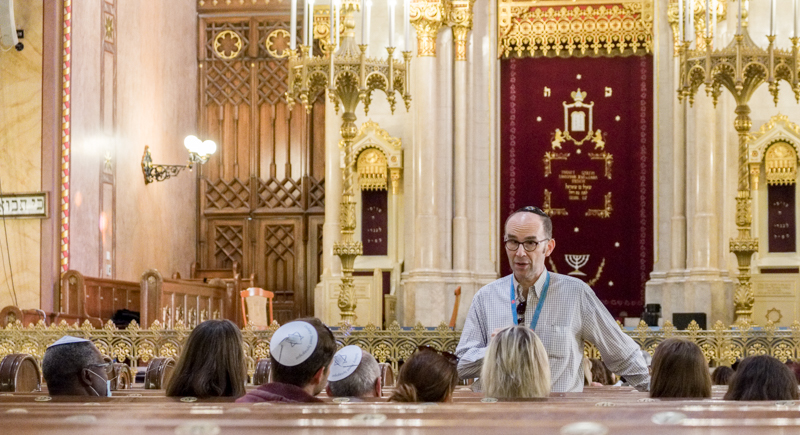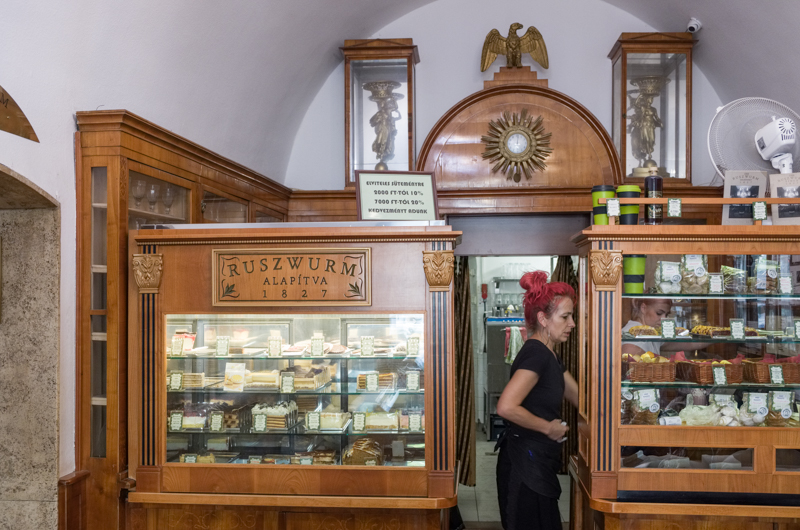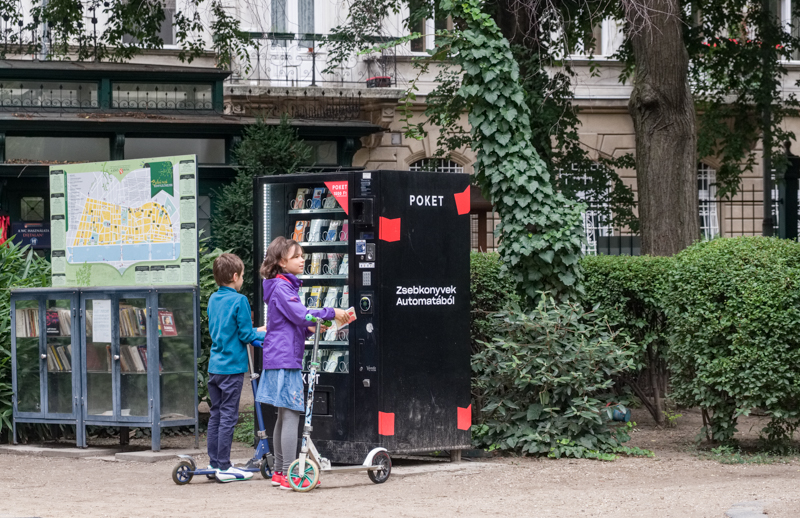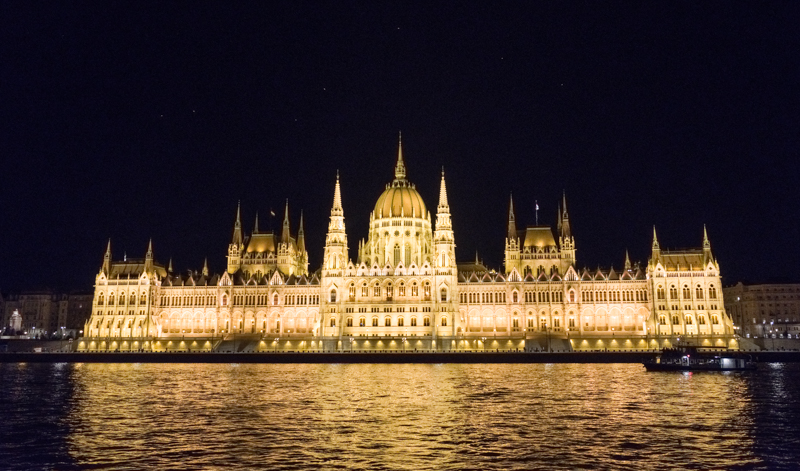All the photos in this week’s blog are from our trip to Budapest. Most of my travels are either business trips or getting together with family. While I manage to see the places I go to and to take many pictures, sight-seeing and photography are not the main purpose of such trips. This one was different. We have no friends or relatives in Budapest, so this was a true tourist trip. We spent three solid days and change moving around the city and taking in its many wonderful monuments, parks, and just ordinary but extraordinary features of the city. I have set up a large gallery here, but below I present some images that just did not fit into the gallery (although there is a bit of overlap). I present the images chronologically. We were in Budapest from Tuesday 24th August to Saturday the 28th.
34_1
We arrived in Budapest early Tuesday afternoon, checked into our hotel and set out to have a first look at the city. On the way to the metro, I noted this sign on a balcony. While Covid is not defeated by any means, it is true that infections in Hungary are very low, so there are not many restrictions on daily life:

34_2
Near our hotel there was a small park, called Károlóyi Garden. On its fence there were various pieces of art, but unfortunately the captions were in Hungarian only:

34_3
The first stop on our itinerary was the Great Synagogue (or Dóhany Street Syngagogue, as it is also called). Unfortunately it was already closed for the day when we got there, so all we could do was to peek through the fence, including at the Tree of Life Memorial inside the grounds:

34_4
We then walked around in the neighbourhood around the synagogue a bit. I had read about the “ruin pubs” in the Lonely Planet guidebook, bars placed in derelict buildings with only minimal remodelling. This one is called Szimpla Kert. It was not yet beer time, but we had a look at the place, including the amusing toilet doors:

34_5
Szimpla Kert actually houses several bars. This is the menu of one of them (when looking at prices, keep in mind that 1 Euro is worth about 350 Hungarian Forints):

34_6
A couple with two impressive poodles, Kazinczy Street:

34_7
We then made our way to the banks of the Danube, passing this skatepark on the way. I was amused by the couple, completely oblivious to the world around them:

34_8
We also passed this nice little park, with young people enjoying the good weather:

34_9
Finally, we reached the river and our goal, the Shoes on the Danube monument to as many as 20,000 Jews who were executed here by the Hungarian Arrow Cross fascist militia in late 1944 and early 1945. The victims were forced to take off their shoes before being shot. The monument was erected in 2005, and is one of the most emotive such monuments I have ever seen:

34_10
After this sombre visit, we went to Budapest’s main shopping street, Váci Street. I sat down in a bar while my wife and daughter hit the shops. This woman with her children had the kind of impatient expression that one usually sees on the faces of husbands:

34_11
I was sitting at an outdoor table in a bar across the street from this one:

34_12
One of the beverages I enjoyed was this glass of pálinka, Hungary’s favourite distilled drink, a cousin of Italy’s grappa:

34_13
On Wednesday, I got up early, as is my habit, and set out on a morning walk while my two females were still sleeping. I walked to the river bank and looked at the Rudas Baths on the Buda side:

34_14
Flowers in the bin–some romantic disagreement the night before, perhaps:

34_15
I happened upon another Holocaust memorial, a sculpture with numbers to symbolise the numbers tattooed on the arms of concentration camp inmates, with the names of all the camps on the tiles in the grass. This painful history is always present in Budapest, probably due to its large Jewish population, then and now:

34_16
Just before returning to my hotel, I stopped at this bakery for some coffee and pastries to take to our room (breakfast in the hotel was obscenely expensive, so we abstained):

34_17
Once everyone was ready, we set out again. We had bought tickets to the Great Synagogue the previous evening, so we could just walk in. And it was truly magnificent:

34_18
A volunteer (or paid staff member, I am not sure) talks about the synagogue and its history to a group of visitors. They have such talks in several languages. We alternated between the English and the Spanish groups and learned that this synagogue is the largest in Europe and second-largest in the world (the largest is in New York). We also learned that the Jewish population of Budapest exceeds 100,000 but since the majority are secular, the synagogue is used mainly for the High Holidays when many people attend the services:

34_19
In 1944, many of Budapest’s Jews were forced into the ghetto adjacent to the synagogue, from where they were deported to the death camps or murdered locally. There is a cemetery in the synagogue garden:

34_20
There is also a memorial for those whose bodies were never recovered:

34_21
We spent a couple of hours at the synagogue, and then set out in search for lunch. The area around the synagogue is known as the “Jewish quarter” although in reality its population is completely mixed. Here are two of its inhabitants:

34_22
We did find a good lunch, something that is not difficult in Budapest. The Lonely Planet book said that Hungarian cuisine is the best in Central and Eastern Europe, and I cannot disagree:

34_23

34_24

34_25
After lunch, we went to the Castle Hill to see the area around Buda Castle. My sweet-tooth daughter had done some research and learned that the Castle Hill had one of the oldest cafés in Budapest (the famous Vienna café culture was just as vibrant in Budapest). So we went there for the post-lunch dessert:

34_26
Monica ordered two different cakes, and before digging in she photographed them:

34_27
One of the attractions of Castle Hill are the great views of the Danube and the city:

34_28
As our visit to the Castle Hill was drawing to a close, those delightful young women asked me to take a picture with their camera, which I did–but then I also took one with mine:

34_29
Thursday started the same way as Wednesday–I got up at 5, and ventured out on my own. I wanted to visit one of the covered food markets, which open early. In this case, I chose the Rákóczi market. I got there as it was opening, at 6, but at that point it was still fairly empty:

34_30
Fortunately, this breakfast oasis was open, so I could get the required caffeine into my body:

34_31
An early customer at the fruit and veg stand:

34_32
I asked this friendly butcher for the spiciest salami he had–and to take his picture:

34_33
This is the salami–and it was indeed delicious:

34_34
Later on Thursday, we went to the Memento Park. As was the case in other ex-Communist countries, in Hungary a lot of street names were changed, and a lot of statues were removed from the public space after the fall of Communism in 1989-90. But in Budapest someone took the wise decision to preserve history by moving the statues to a site outside the city, in a somewhat unattractive industrial area, thereby creating a new tourist attraction. This is still work in progress, as more statues are shipped in from towns around Hungary:

34_35
Monica poses in another symbol of the bad old days, the East German Trabant which was ubiquitous around Eastern Europe:

34_36
Back in the centre, a guardian of a bar near the hotel:

34_37
Sign of the time:

34_38
In the evening, we went back to the ruin bar, and this time we did have a couple of beers:

34_39
These guys look like a stag party, although in contrast to most stag parties, they behaved themselves:

34_40
Another bar that we passed on our way back to the hotel:

34_41
I started Friday by exploring the Károlóyi Garden:

34_42
I noticed something I have not seen anywhere else, a book vending machine. And to my delight, these two children came by and bought two books:

34_43
A spot of morning meditation:

34_44
In the afternoon, we went to see the Hungarian National Museum. To be honest, it was not the best such museum I have visited. It was a bit old-fashioned, with various objects arranged chronologically, with few attempts to connect them with a common theme. But there was a highlight, a piano made in London for Beethoven in 1817. He used it until his death in 1827, and it ended up in the possession of a Viennese art dealer, who gave it to the great Hungarian composer and pianist Franz Liszt in 1845. Liszt used the piano for the next many years, donating it to the then new museum in 1873:

34_45
One gets goosebumps thinking of all the great music created on this instrument:

34_46
The greatest Hungarian composer, Franz Liszt (fans of Bartok may have a different opinion…):

34_47
Later on Friday, we passed the Memorial for Victims of the German Occupation, erected in 2014. It depicts the German eagle attacking the Hungarian angel in 1944:

34_48
Many people find this monument extremely controversial because it portrays Hungary as a victim of Nazi Germany whereas in reality it was a fellow fascist collaborator. The Germans invaded only in the late stages of the war, after losing confidence in their Hungarian allies. So today, there are numerous posters and photos in front of the monument, disputing the official version of history:

34_49
We finished our visit to Budapest with an evening cruise on the Danube, taking in the beautiful sights, such as the Elisabeth Bridge here:

34_50
And the parliament building, modelled on London’s Westminster:

On Saturday morning, we got up at an obscenely early hour, took a taxi to the airport, and flew home to Alicante.